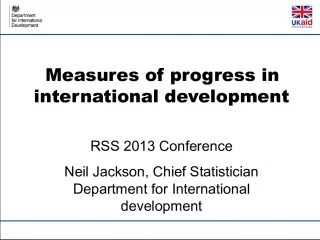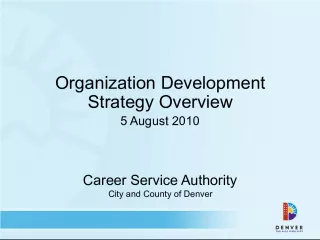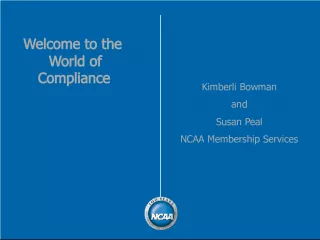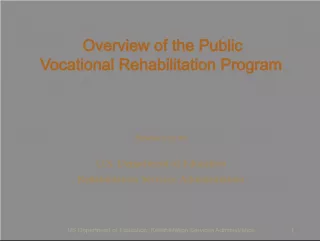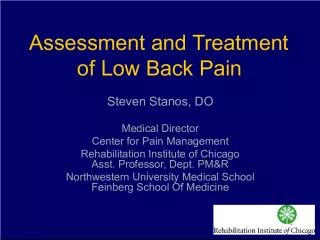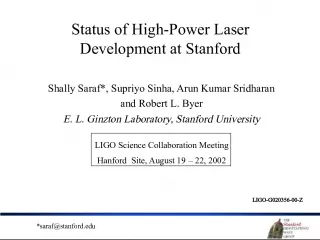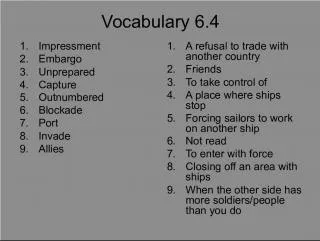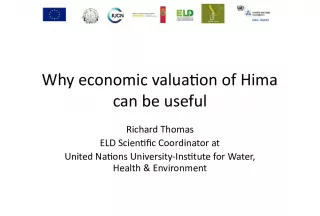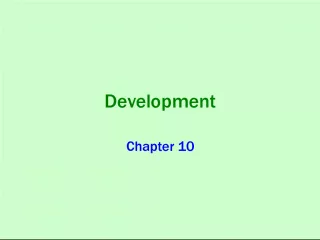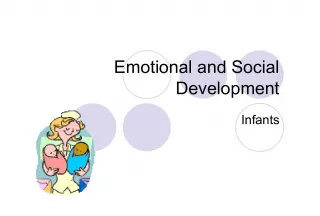Overview of Millennium Development Goals in Lebanon


This article provides an overview of Millennium Development Goals (MDGs) in Lebanon, discussed at the National Workshop for the integration of Population matters including Reproductive Health and Gender into national Development Planning in 2006. The article explains how MDGs and related targets were set in the Millennium Declaration to eradicate poverty and captures the multidimensionality of poverty. It also highlights the progress towards the 8 goals and 11 targets monitored through 43 agreed indicators.
- Uploaded on | 1 Views
-
 siddoyle
siddoyle
About Overview of Millennium Development Goals in Lebanon
PowerPoint presentation about 'Overview of Millennium Development Goals in Lebanon'. This presentation describes the topic on This article provides an overview of Millennium Development Goals (MDGs) in Lebanon, discussed at the National Workshop for the integration of Population matters including Reproductive Health and Gender into national Development Planning in 2006. The article explains how MDGs and related targets were set in the Millennium Declaration to eradicate poverty and captures the multidimensionality of poverty. It also highlights the progress towards the 8 goals and 11 targets monitored through 43 agreed indicators.. The key topics included in this slideshow are MDGs, poverty, development agenda, Lebanon, reproductive health,. Download this presentation absolutely free.
Presentation Transcript
1. OVERVIEW OF MDG IN LEBANON National Workshop for the integration of Population matters including Reproductive Health and Gender into national Development Planning May 3-11, 2006 Asma Kurdahi, Assistant Representative UNFPA Lebanon
2. Millennium Development Goals In 2000, the Millennium Declaration set 8 mutually reinforcing time-bound development goals and related targets for progressively eradicating poverty MDGs and targets now at forefront of development agenda: agreed by developing countries and development partners capture multidimensionality of poverty Baseline for MDGs 1990 : target for realization 2015 Progress towards the 8 goals and 11 targets monitored through 43 agreed indicators
3. Millennium Development Goals GOAL 1: Eradicate Extreme Poverty GOAL 2: Achieve Universal Primary Education GOAL 3: Promote Gender Equity and Empower Women GOAL 4: Reduce Child Mortality GOAL 5: Improve Maternal Health GOAL 6: Combat HIV/AIDS, malaria, and other diseases GOAL 6: Ensure Environmental sustainability GOAL 8: Develop Global Partnership
4. Status/progress MDG Lebanon Report
5. MDG Lebanon Report: Status GOAL 1: Eradicate Extreme Poverty 7% of the Lebanese live in extreme poor conditions.
6. MDG Lebanon Report: Status GOAL 2: Achieve Universal Primary Education Significant progress made to date 40% dropouts before completion of basic education Quality of education Missing of enrollment opportunities due to misdistribution of schools Mismanagement of human resources Weak vocational education Regional disparities Weak integration of people with special needs
7. MDG Lebanon Report: Status GOAL 3: Promote Gender Equity and Empower Women Closing gap of girls to boys ratio in primary education Illiteracy rates higher among females than males (with improvement in younger age groups) Gender disparities in economic activity (21% of women in labor force) and wages Low female representation in decision making and participation in public life (though improvement in womens representation in municipality elections) Little progress related to CEDAW
8. MDG Lebanon Report: Status GOAL 4: Reduce Child Mortality Improvement in child mortality (i.e. IMR 26/1000 in 2000 vs 19/1000 in 2004) Significant progress in prevention of diarrhea and home management Polio and measles outbreak though 90% coverage in 2000 (latest case of polio in 1994) Regional disparities i.e. a child born in Aakar or Balbek 3 times more likely to die than in Beirut
9. MDG Lebanon Report: Status GOAL 5: Improve Maternal Health Improvement in maternal mortality (i.e. 104 in 1996 to 80/100,000 in 2004) Stability in birth attended by skilled personnel (i.e. 96%) Drop in contraceptive prevalence rate (i.e. 62% in 2000 vs 58% in 2004) Regional disparities for prenatal care (98% in Beirut vs 89% in Bekaa) Low utilization of Public Sector outlets compared to private sector)
10. MDG Lebanon Report: Status GOAL 6: Combat HIV/AIDS, malaria, and other diseases National Strategic plan 2004-2009 M&E system in place 903 reported cases (end 2005) compared to 700 cases (early 2003) Change in disease pattern (i.e. more cases among youth + less due to travel) Youth more vulnerable to HIV/AIDS (62% started first Sexual intercourse at age 20 and 36% of 15-24 age groups use condoms in 2004 compared to 24% in 1996) HIV/AIDS considered a taboo Weak referral system and absence of full range of services to at risk population
11. MDGs in Lebanon Lessons learned and challenges
12. MDG Lebanon Report: Lessons learned Absence of comprehensive, updated, and accurate statistical system Unrealistic, low prevalence and not very meaningful targets (i.e. girls to boys ratio to primary education, proportion of birth by skilled personnel) Absence of priority areas (i.e. young people, migration, ageing) and analysis (i.e. maternal morbidity)
13. MDG Lebanon Report: Lessons learned (Contd) Weak linkage of gender, education, and health goals with poverty goals Model for MDG costing exercise may not have been the needed one Absence of a comprehensive and regular monitoring system of MDG goals and targets Weak coordination among various players
14. MDGs in Lebanon Recommendations
15. MDG Lebanon Report: Recommendations Develop and agree on regular, periodic, updated, and needed statistical plan Address demographic transitions and projections in analysis Address needs and situation of all population (including youth, aged, people with special needs, population at risk) in analysis
16. MDG Lebanon Report: Recommendations (Contd) Mainstream gender and human rights dimensions in analysis Emphasis emerging issues (i.e. maternal morbidity, EOC, etc) in analysis Ensure through analysis of changes in various patterns Elaborate MDG5 into a wider Reproductive and Sexual Health dimension
17. MDG Lebanon Report: Recommendations (Contd) Elaborate all MDGs within a poverty reduction context Increase common ground with the aim to eradicate poverty by establishing new and wider partnership opportunities for jointly addressing development challenges and for measuring results Review targets of Lebanon MDGR in terms of significance and meaninfulness
18. MDG Lebanon Report: Recommendations (Contd) Develop cross sectoral strategies and interventions towards poverty reduction and narrowing regional gap Develop and use common indicators framework with needed and meaningful indicators common indicators framework with needed and meaningful indicators Develop comprehensive monitoring system for MDG Goals and targets
19. MDG Lebanon Report: Recommendations (Contd) Costing of MDGs required to identify required resources Reflect socio-cultural aspects and social determinants of health in analysis Develop an MDG Advocacy strategy and campaign across all sectors and levels Involve poor people and marginalized groups in MDG process and strategies development
20. MDGs in Lebanon ICPD and MDG
21. MDGs in Lebanon MDGs do not override other goals and targets reached at global conferences of 1990s, e.g. ICPD RH goal : Universal access to quality RH services by 2015 ICPD RH goal not included in MDGs but essential for meeting MDGs, especially child, maternal, HIV/AIDS and gender goals directly related to health, social and economic outcomes ICPD RH goal should be included and reported in on country-level reports
22. MDGs in Lebanon MDG versus MD?
23. Millennium Declaration Values and principles Peace, security and disarmament Development and poverty Protecting our common environment Human rights and democracy Protecting the vulnerable Meeting the special needs for Africa Strengthening the United Nations
24. Millennium Declaration: Recommendations MDGs must be presented and discussed in the context of the full Millennium Declaration Promotion and adoption of a Human Rights-Based Approach to Programming in all development programmes and projects
25. Millennium Declaration: Recommendations Indicators for human rights principles must be developed and a nationals monitoring and reporting systems must be established for both the outcome and process in the implementation of the Millennium declaration. Realization of MDG leads to the achievement of the Millennium Declaration
